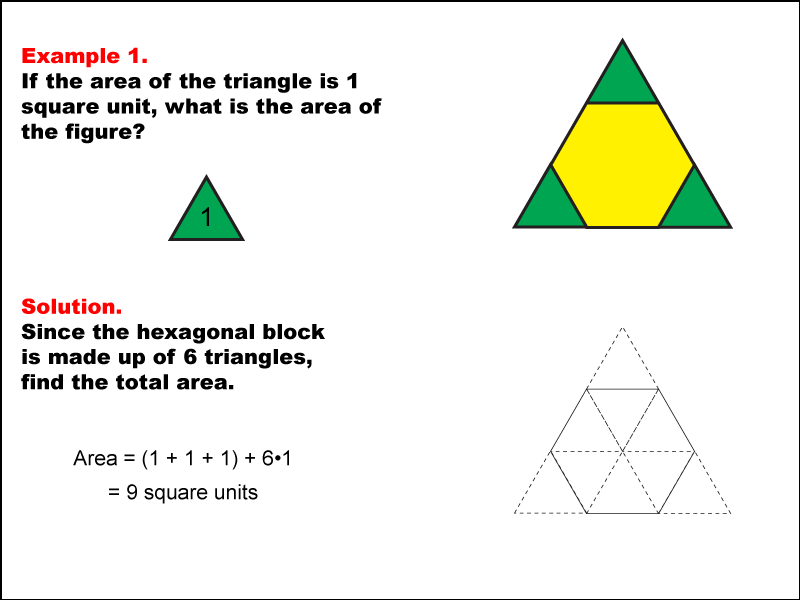
Display Title
Math Examples: Area with Pattern Blocks: Example 1
Display Title
Math Examples: Area with Pattern Blocks: Example 1

Topic
Geometry
Description
This example demonstrates the calculation of area using pattern blocks. A hexagonal figure is composed of six triangles, each with an area of 1 square unit. The total area of the figure is determined by summing the areas of all triangles, resulting in 6 square units.
Pattern blocks are an effective tool for teaching geometry concepts, particularly area calculation. By using tangible shapes, students can visualize and manipulate geometric figures, making abstract concepts more concrete. This collection of examples showcases various combinations of pattern blocks, allowing students to explore different shapes and their relationships.
Providing multiple worked-out examples is crucial for students to fully grasp geometric concepts. Each example builds upon the previous one, introducing new shapes and relationships. This approach helps students develop problem-solving skills and recognize patterns in area calculations across different geometric configurations.
Teacher Script: "Let's look at this hexagon made of triangles. Each triangle has an area of 1 square unit. Can you count how many triangles make up the hexagon? That's right, there are 6! So, to find the total area, we simply add up the areas of all the triangles. What do you think the total area will be?"
For a complete collection of math examples related to Geometry click on this link: Math Examples: Area with Pattern Blocks Collection.
| Common Core Standards | CCSS.MATH.CONTENT.6.G.A.1 |
|---|---|
| Grade Range | 6 - 7 |
| Curriculum Nodes |
Geometry • Polygons • Applications of Polygons |
| Copyright Year | 2024 |
| Keywords | area with tiles |